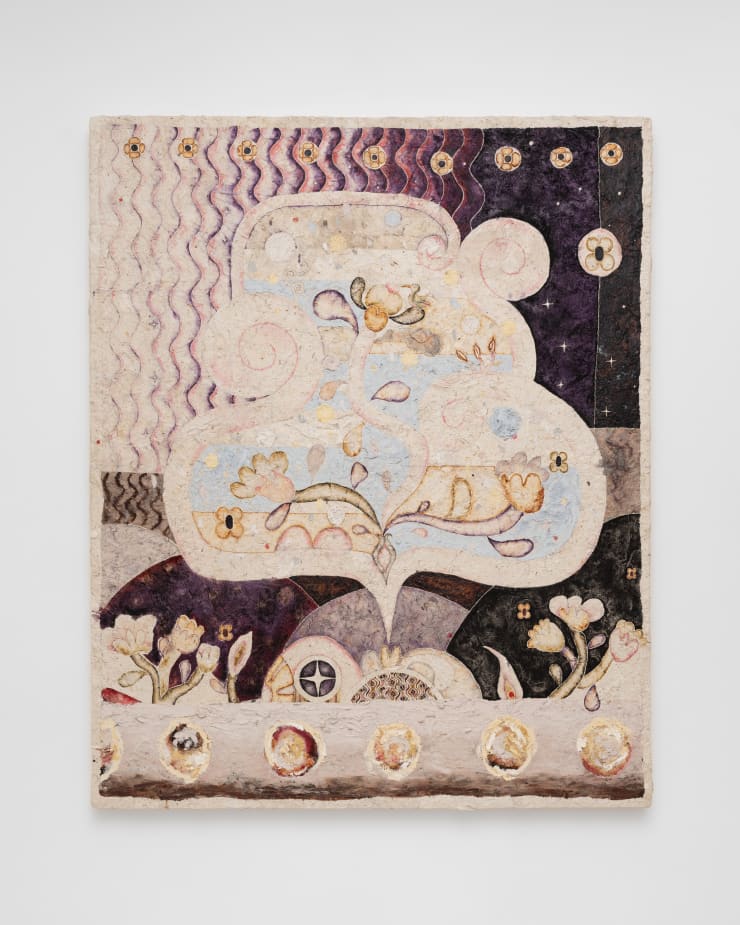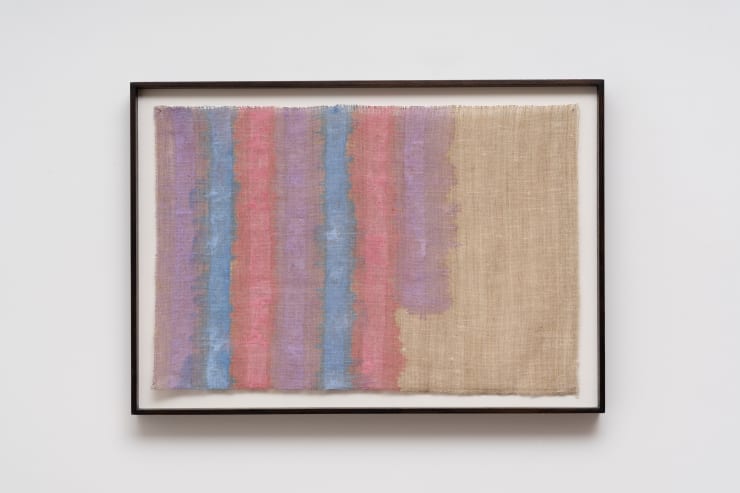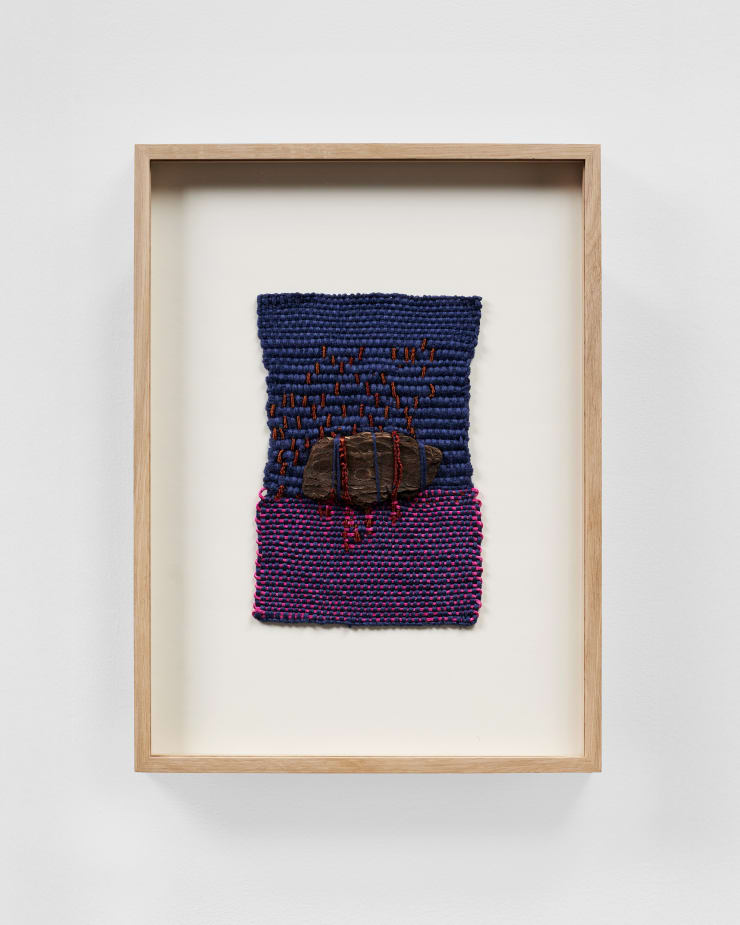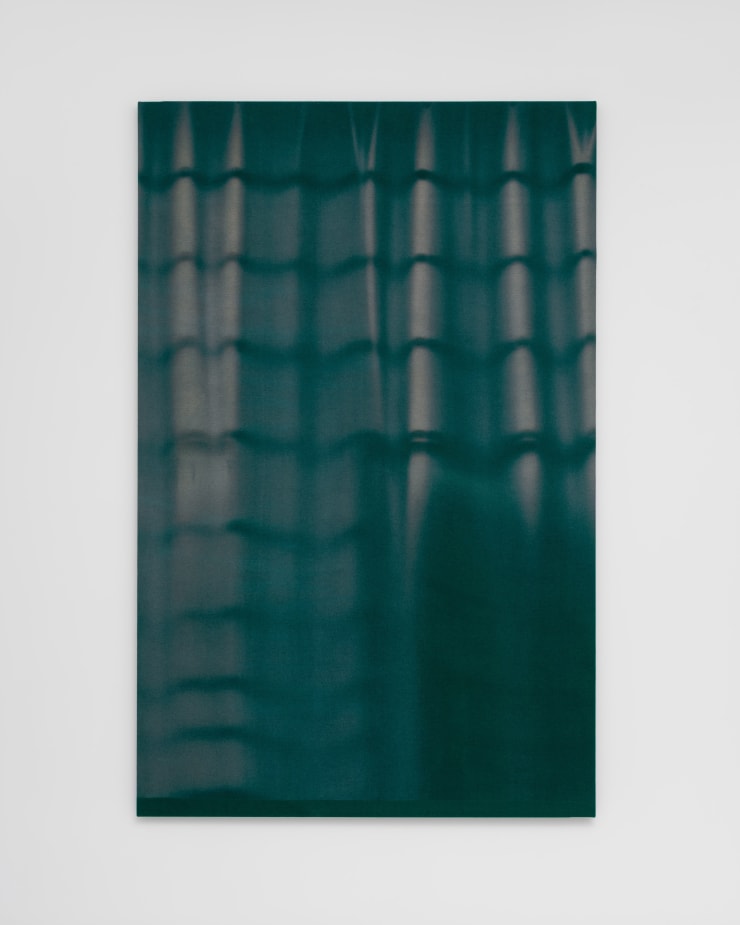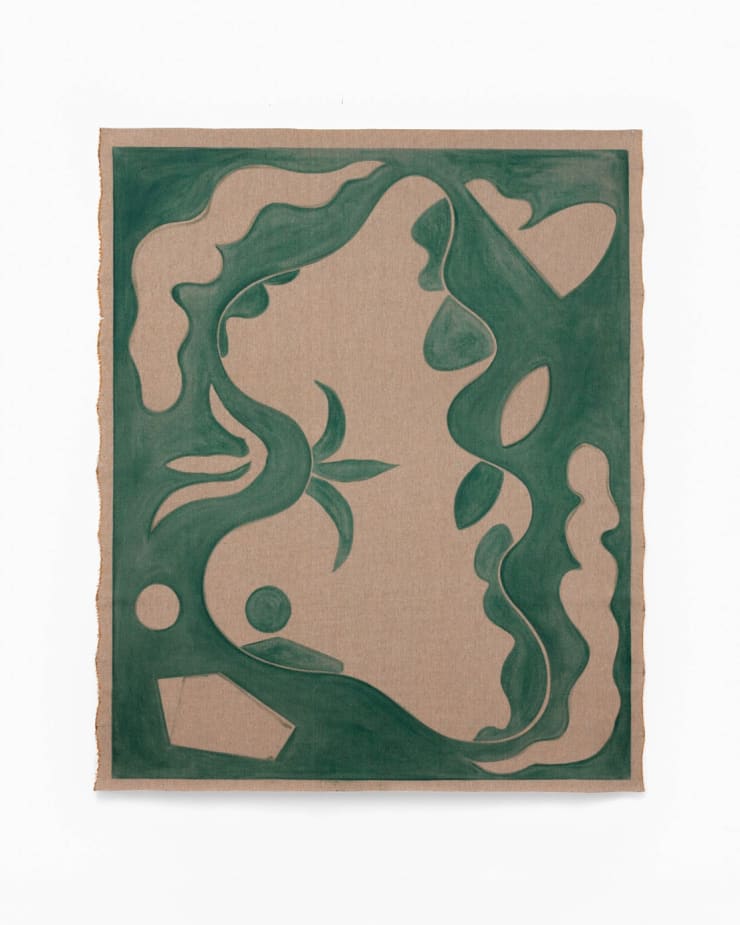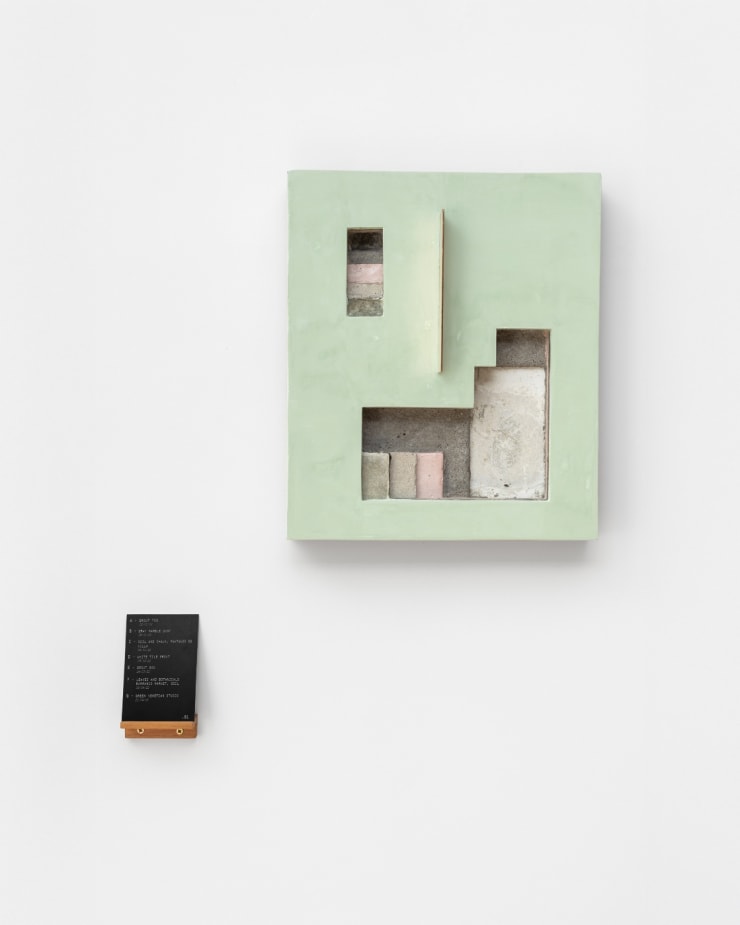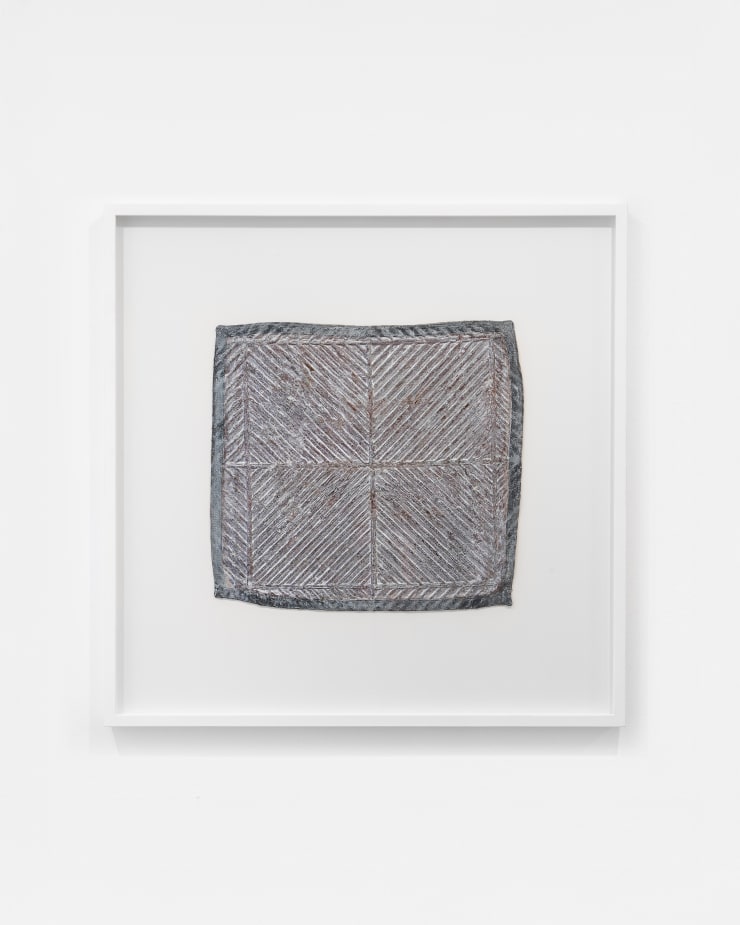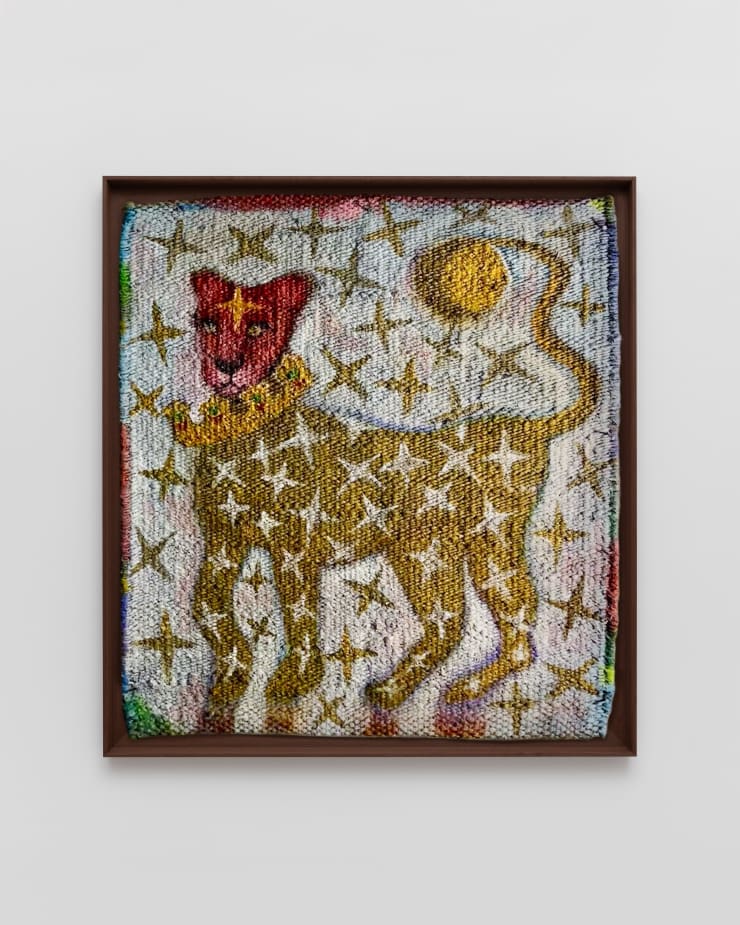-
 Omar MendozaTransition Cromática, 2023Honeysuckle, Brazilwood, jonote, kina, charcoal, logwood, lemon, jagua, St. Benedict's thistle, turmeric, beet, beeswax and cotton on canvas
Omar MendozaTransition Cromática, 2023Honeysuckle, Brazilwood, jonote, kina, charcoal, logwood, lemon, jagua, St. Benedict's thistle, turmeric, beet, beeswax and cotton on canvas -
 Giorgio GriffaLinee verticali, 1977Acrylic on canvas
Giorgio GriffaLinee verticali, 1977Acrylic on canvas -
 Sheila HicksMid nights late Dream, 2022Synthetic fibers, cotton, linen, shale
Sheila HicksMid nights late Dream, 2022Synthetic fibers, cotton, linen, shale -
 Alek O.Paolo II, 2019Found wool curtain
Alek O.Paolo II, 2019Found wool curtain -
 Tiago MestreUntitled, 2025Oil on raw linen
Tiago MestreUntitled, 2025Oil on raw linen -
 Ishmael Randall WeeksCodigo Atemporal #81, 2022Grouts, soils, wood and copper
Ishmael Randall WeeksCodigo Atemporal #81, 2022Grouts, soils, wood and copper -
 Heidi BucherUntitled, 1981Mother of pearl, latex, textile
Heidi BucherUntitled, 1981Mother of pearl, latex, textile -
 Camile SproesserThe Wizard, 2025Oil on woven jute
Camile SproesserThe Wizard, 2025Oil on woven jute
Textured
Past exhibition
